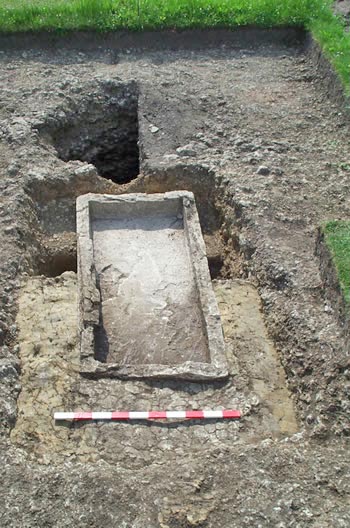Lydiard Park, just south west of Swindon, is owned by Swindon Borough Council. With the help of the Heritage Lottery Fund and the support of RWE Innogy, the park has been restored to some of its eighteenth century glory. During summer 2004 Wessex Archaeology undertook the essential investigation work needed to ensure that the restoration is authentic.
But this was no ordinary excavation. A key part of the project was the involvement of the local community and over 200 local residents took part in digging the eighteenth century features in the park.
The archaeology is of great interest to many of the visitors, walkers and families who regularly visit this lovely park, and the archaeology events were very well attended.
The excavations were primarily concerned with features of the park known to have been present in the eighteenth century, like the walled garden and the dam wall, but other areas were also investigated. Find out more about the archaeology by clicking on the menu to the right.
Download the pdf below to view the exhibition, or to find out more about the house visit the official Lydiard Park website.
How the landscape was made
Medieval origins
Lidiar or Lidiarde is listed in the Domesday survey of 1086 as a manor of 430 acres, much of which by 1254 had been turned into a deer park for the exclusive hunting of the lord of the manor. This was enclosed by a steep fenced bank and ditch – the ‘park pale’.
Lydiard House and St. Mary’s Church are of medieval origin, but there is little left of that landscape of fields and houses which was swept away in the sixteenth century as the common fields, commons and marshes were enclosed.
A Passionate Gardener
In the early years of the 17th century the park was landscaped, formal gardens created to the south east of the present house and the three avenues of trees planted. Many of the low earthworks in the lawns in front of the house are the remains of these formal gardens. The gardens and parkland produced vegetables, rabbits and venison that were sent to the St.John’s London home at Battersea. Lady of the Manor, Johanna St.John, took a keen interest in the gardens, issuing a constant stream of advice and instruction to her steward. Many of these documents have survived and will be used in planning the restored gardens.
A Very English Landscape
In the eighteenth century fashion in garden design changed and the formal gardens were cleared away to be replaced with open vistas, romantic features and attractive walks. At Lydiard these were designed to compliment the newly remodelled Palladian house and the new walled garden to the north west of the house that still exists. Some of the landscape features from this period, such as the lake dam and the walled garden, are easily visible; others are hidden and searching for them was part of our work.
A playboy and spendthrift
Frederick, 2nd Viscount Bolingbroke, was more interested in his horses than improvements to his estate. However he left a record of it in the paintings of George Stubbs who visited the Park to paint Frederick’s favourite hunter and some of his 20 racehorses. By the mid-nineteenth century the hey-day of the Park was over, trees began to encroach on the open pasture and the lake to silt up.
Swindon Corporation and World War II
In 1943 the house and 147 acres of the estate were sold to Swindon Corporation and so rescued from potential demolition. Under the leadership of Swindon Town Clerk, David Murray John, the house was instead restored, and Lydiard Park has been managed as a public amenity ever since.
During World War II American forces set up the 302nd Station Hospital camp in preparation for D-Day landing casualties. The camp was later used as a German Prisoner of War Camp. After the war it became housing, to alleviate the chronic post-war shortage, but in 1960 the buildings were demolished and the land is now dedicated to sports pitches and events.
The walled garden
The excavations in the garden found the layout of the paths and confirmed their alignment. The paths were lined by specially deepened planting beds to improve the growing conditions from the natural shallow soil over limestone. We also found evidence of ornamental garden features and a well with an adjacent stone cistern. These were all unknown aspects that were fed back into the design of the restored gardens.
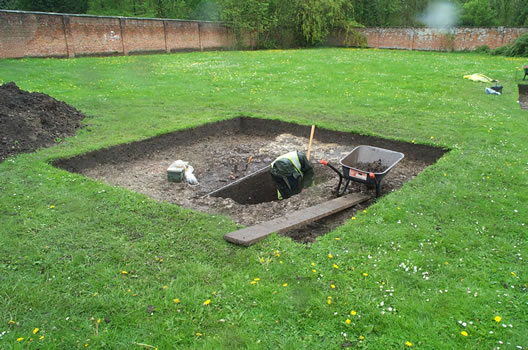 |
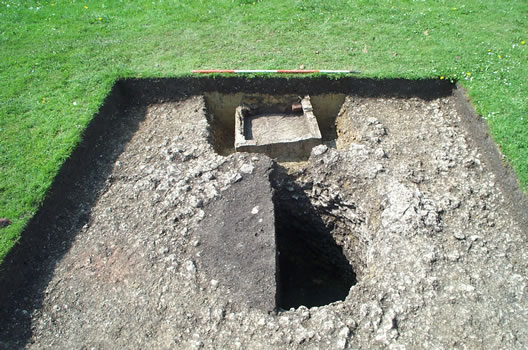 |
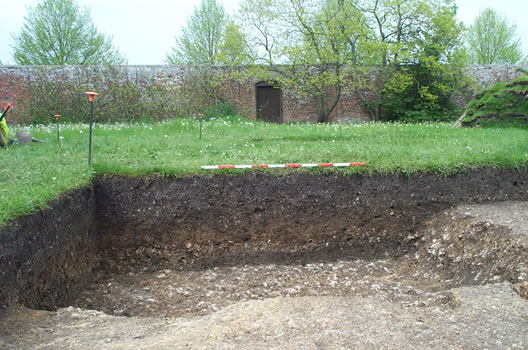 |
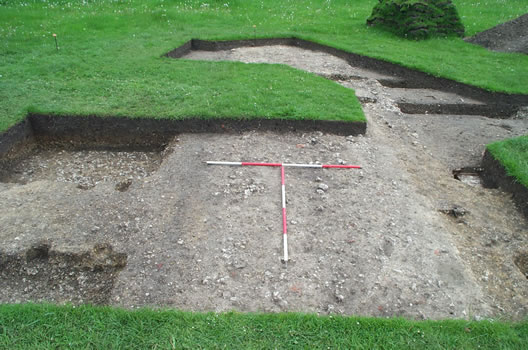 |
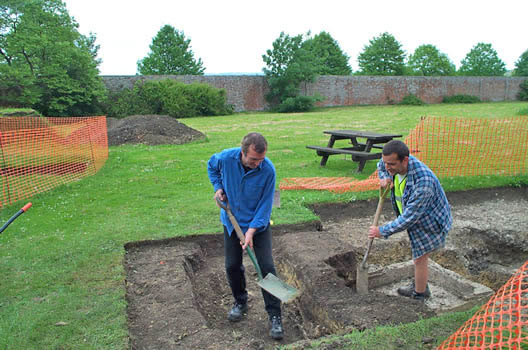 |
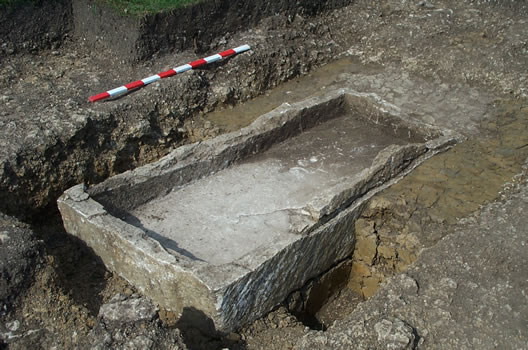 |
|
|
Outer garden wall
Two areas to the south west of the walled garden were investigated. The corner of the outer wall was found and so was a small bothy or shed built into the wall. Both areas produced finds – as well as the expected debris of old mole traps, flower pots and bottles, there were pieces of medieval pottery including some Minety ware from north west Wiltshire.
The structure of the outer wall was of brick and stone, and included recycled building materials, probably from the demolished service wing of the old house.
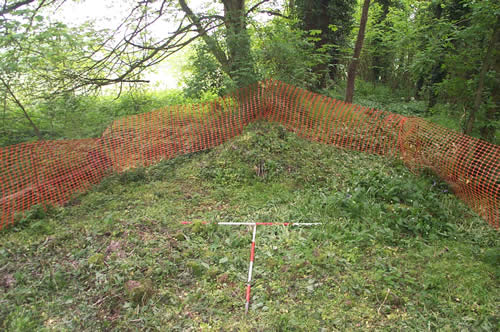 |
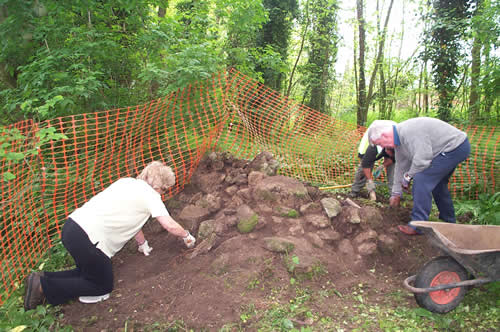 |
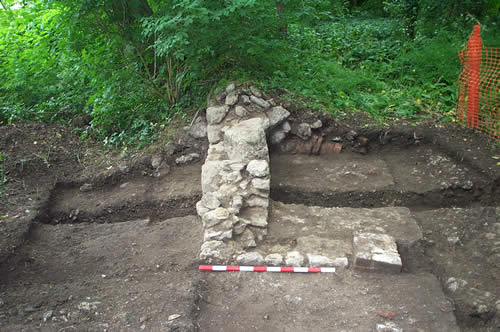 |
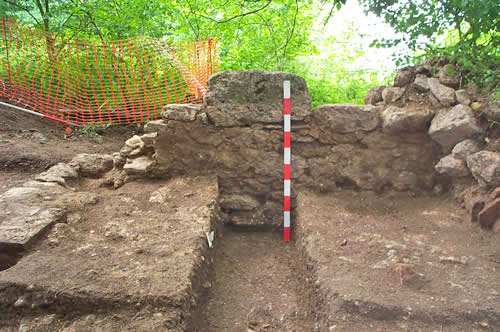 |
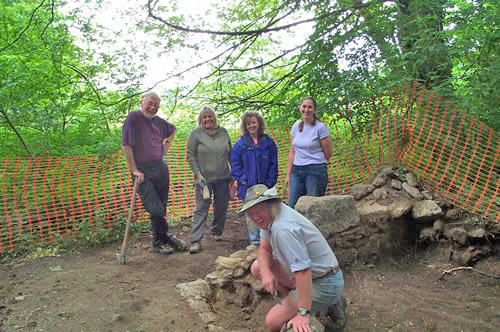 |
|
The lake
A derelict structure at the north west corner of the lake was investigated. The steps down towards the silted up lake originally suggested it was a slipway or a boathouse. Further investigations made this seem less likely. The structure has a flagstone floor and is bricked in at the lake end. Inside it was rendered. All of this suggests a different use – perhaps a plunge pool for a bracing dip by the lake, or a holding tank for fish.
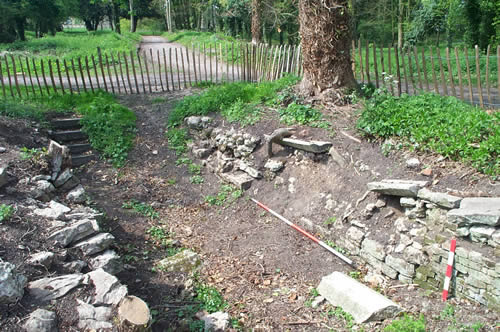 |
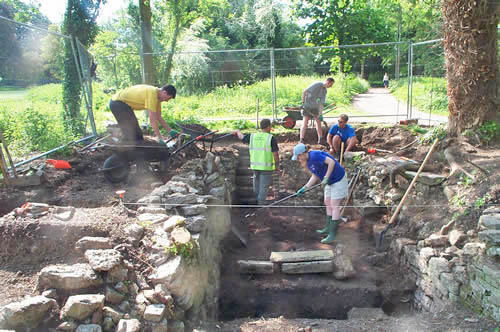 |
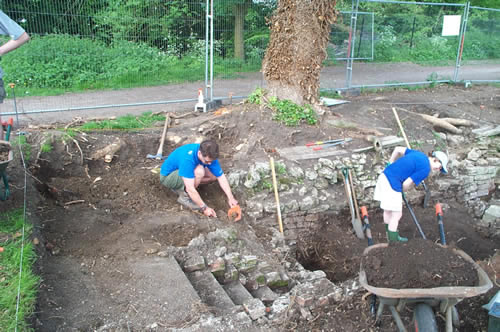 |
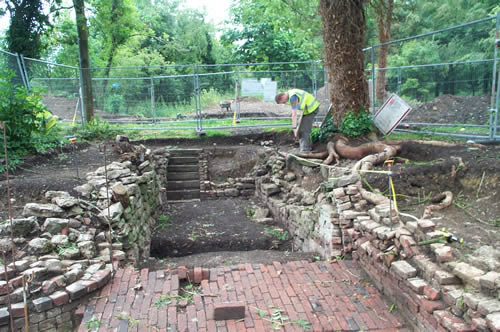 |
The park pale
A section of the park boundary by Greendown School was excavtated, and it was found that the stone wall is built directly on the limestone at the base of the ditch. There was no evidence of earlier filling of the ditch, which means that either the boundary was first built in the 18th century, or that the earlier medieval Park Pale that was thought to be there was completely changed and cleaned out when the 18th century landscaping was carried out .
In the same area we dug two trenches looking for an ornamental garden ‘temple seat ’ shown on a map in 1766 on the east side of the lake. No trace of it was found, so it was probably an insubstantial wooden structure or seat.
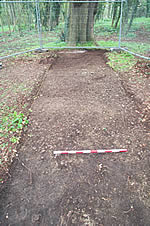
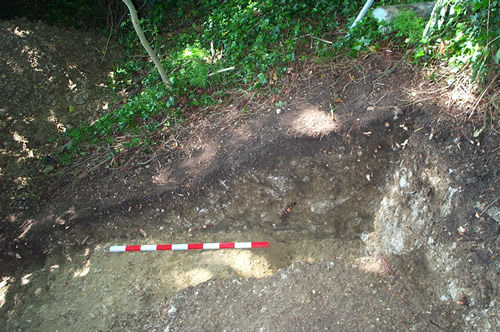 |
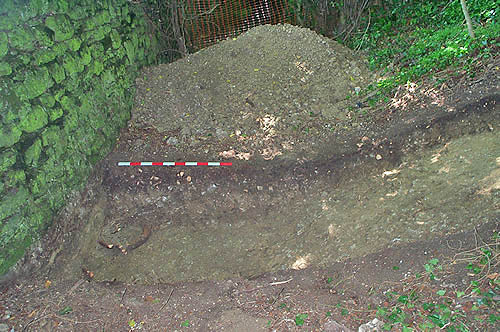 |
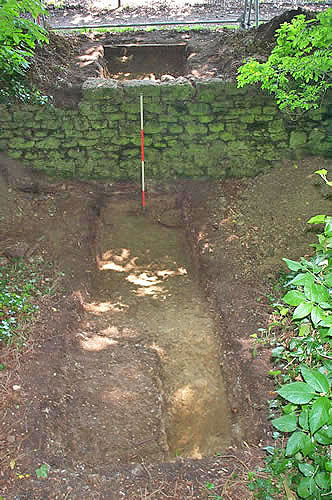 |
The dam
In order to restore the lake to its original size and shape, the construction of the earthen dam and its castellated stone wall were investigated. The dam wall was probably built in the mid eighteenth century and is thought to have been purely ornamental. Behind it volunteers found a number of post-medieval finds, including bits of clay pipe with the stamps of Thomas Hunt and Roger Andrus – both working in Marlborough in the late eighteenth/early nineteenth century.
At the approach to the dam from the house, close to the lake, a long stretch of was uncovered, marking what appeared to be the western limits of the dam wall and showing where it was joined to the Yew Walk.
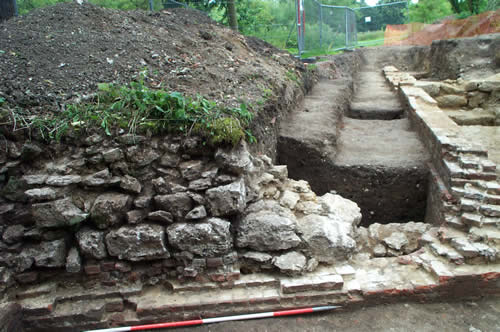 |
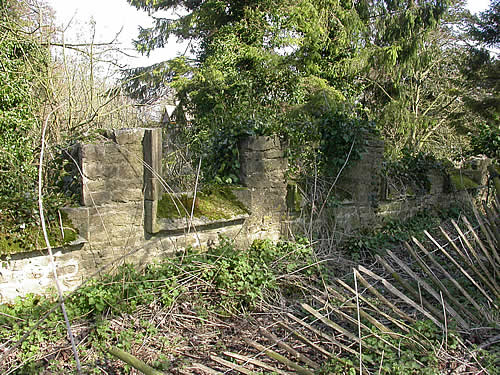 |
The car park
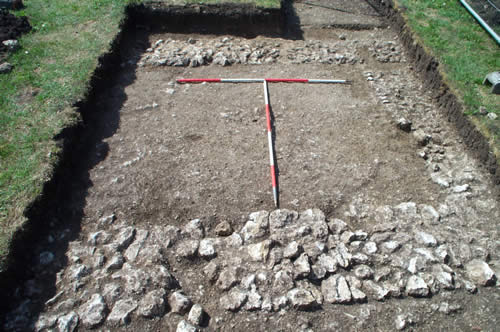 The new car park area behind the Church was one of the last areas to be investigated, but it contained some of the most interesting finds – the remaining foundation course of stone work of a Roman building, the construction of which reuses material from a grander Roman building, possibly a villa.
The new car park area behind the Church was one of the last areas to be investigated, but it contained some of the most interesting finds – the remaining foundation course of stone work of a Roman building, the construction of which reuses material from a grander Roman building, possibly a villa.
The trenches here also found a pair of ditches that may be the remains of a medieval trackway or field boundary.
Community involvement
Public involvement was at the heart of this project, and a large number of local people helped in the clearance and excavation work. Volunteer groups came from RWE npower, Greendown School, Churchfields School, Wiltshire Probation Young Offenders, the Park Rangers, Swindon Young Carers and English Heritage. Many individuals also came and spent a day digging with the team – in all over 200 people lent a hand.
During half term week there was a Site Open Day, a Family Dig Day, and two Meet the Archaeologists days. Many groups had guided tours around the archaeology of the park. All these events were very popular, with more than 600 people taking part.
Some of the finds from the excavation are on show in the Visitors’ centre at Lydiard Park.
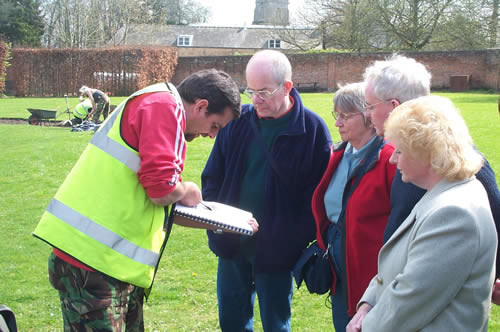 |
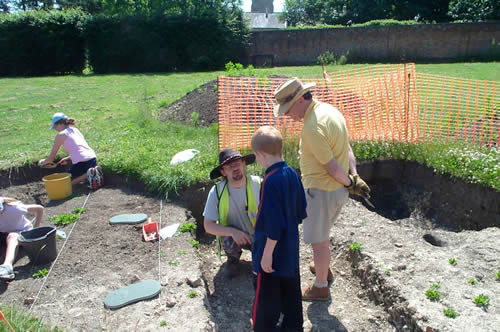 |
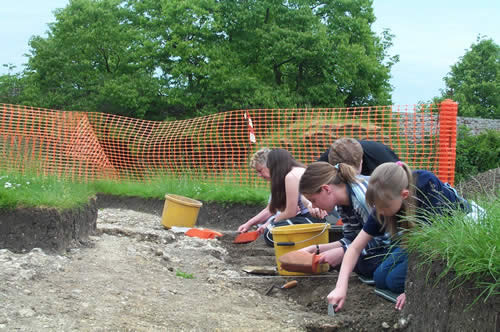 |
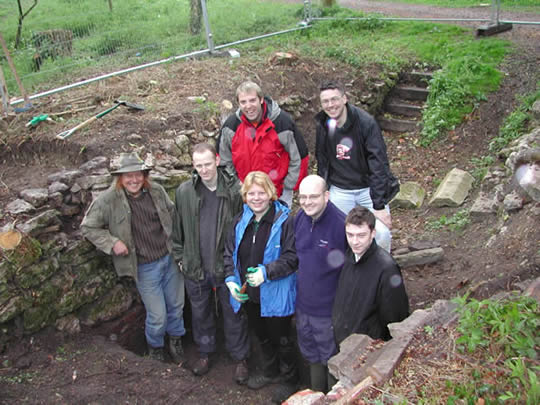 |
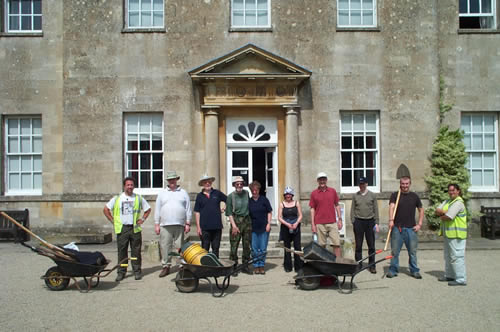 |
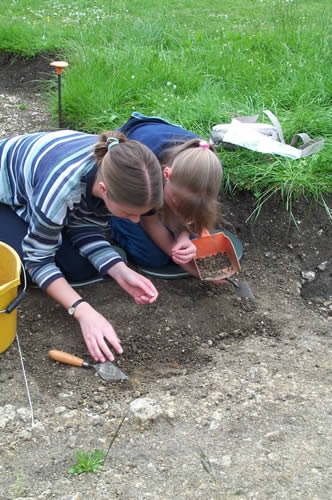 |
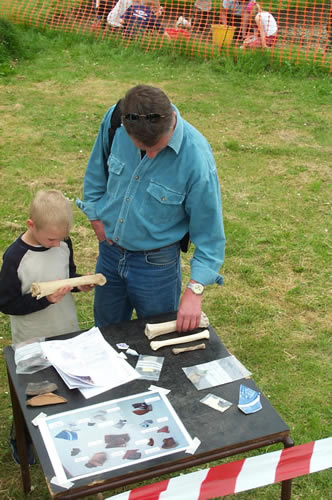 |
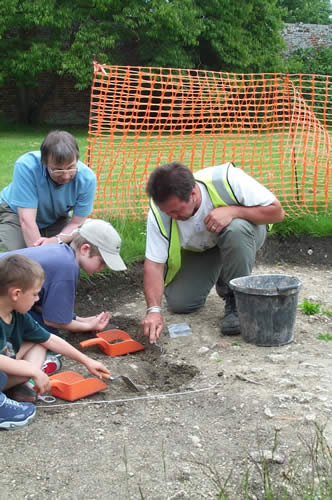 |
|
